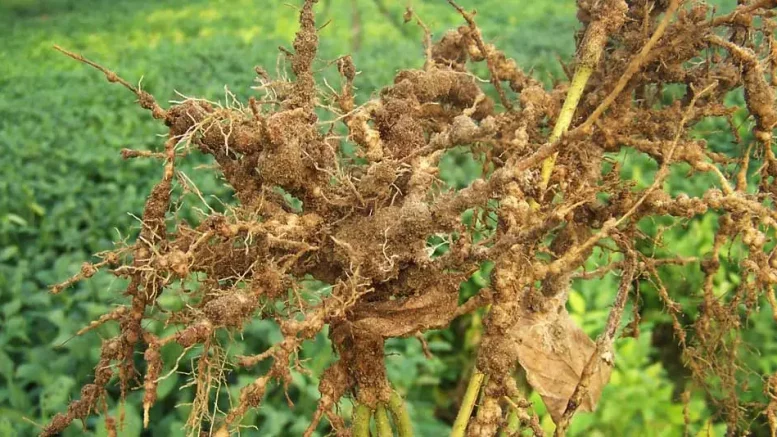“The nematicide market is very dynamic and the search for new products has been constant…”
Cláudia Dias-Arieira is a professor and researcher at the State University of Maringá – UEM, an agronomist and M.Sc. from UEM, with a Ph.D. in phytopathology from the Federal University of Viçosa.

Cláudia Dias-Arieira, researcher at UEM
Nematodes are vermiform organisms found in diverse habitats. Soil is an environment with a high abundance of them. Many species are beneficial, including omnivorous nematodes, bacteriophages, fungivores, nematophages, etc. However, in agricultural soils, plant-parasitic nematodes predominate. They are obligate parasites, in other words, they only feed on living plants. There are a few nematodes in the soil that can also feed on fungi, such as Aphelenchoides besseyi.
Among plant parasitic nematodes, there are species that have a wide host range, parasitizing almost all cultivated plants, such as Meloidogyne incognita, M. javanica, Pratylenchus brachyurus and Helicotylenchus dihystera. On the other hand, there are species whose host range is more restricted, such as Heterodera glycines, which parasitizes soybeans and some other legumes, and Radopholus similis, the burrowing nematode, whose main host is banana trees. The main species of nematodes that occur in Brazil are native, i.e., they are naturally present in our areas. Therefore, eliminating them is virtually impossible, and it is necessary to learn to live with them.
Management strategies
Within management strategies, cover crops are important allies, as long as the farmer knows the species of nematodes present in each area (through laboratory analysis) and has the advice of a consultant to plan the correct management, as a plant may be a bad host for one species but increase others.
Biological control was the nematode management method that grew the most in recent years, with an exponential increase in the national market and prospects for doubling revenue in nematicides in the coming years. A series of factors contributed to this scenario, especially the high control efficiency provided by bionematicides, since, in many cases, such products provide protection equal to or greater than chemical control. The market was also boosted by the number of products registered by the Ministry of Agriculture (MAPA), and advances in formulations, operational ease, and storage time.
Nematicides Market
The nematicides market is very dynamic and the search for new products has been constant. Thus, within chemical products, the farmer can find new molecules with mechanisms of action different from those already widely used, including inhibitors of the enzyme succinate-coenzyme Q reductase, in the mitochondrial complex II of the electron transport chain. Fluopyram, which is already available on the market, and cyclobutrifluram, expected to be launched within a few months are examples, in addition to products from the fluazaindolizine group. These products do not replace the chemical control already known by the farmer, such as thiodicarb and abamectin, but they appear as new options for the market.
“The main species of nematodes that occur in Brazil are native”
In the bionematicides market, the biggest growth was for products containing bacteria of the Bacillus genus. Companies constantly seek to improve their formulations and the efficiency of their products, combining species and/or strains, in addition to advances in formulations, which facilitate transportation, storage and operational aspects. In addition, there is countless research into plant and algae extracts, secondary metabolites, and new species of fungi and bacteria, which should further heat up the nematicide market.
Problems with nematodes are usually aggravated by monoculture and the succession of susceptible plants, such as the soybean-corn system, sugarcane, and coffee farming, since under these conditions nematodes feed and reproduce almost all year round. Even in these cases, it is possible to manage and live with plant parasitic nematodes to avoid losses in yield, as long as the planning and monitoring of the area is assisted by an experienced professional.
READ MORE:

